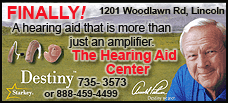|
Child car seat safety information
Helpful tips and advice for parents
 Send a link to a friend
Send a link to a friend
[May 31, 2008]
MERIDEN, Conn. -- The
widespread use of children's car seats has reduced the number of
injuries and fatalities on American roads, but experts agree that
more needs to be done. |
 "Every state requires that children under the age of 4 are secured
while riding in a car," noted Ray Palermo, director of public
information for Teachers' Insurance Plan. "Yet despite the laws and
warnings, car crashes are still the single largest cause of death
among children under the age of 14." "Every state requires that children under the age of 4 are secured
while riding in a car," noted Ray Palermo, director of public
information for Teachers' Insurance Plan. "Yet despite the laws and
warnings, car crashes are still the single largest cause of death
among children under the age of 14."It is estimated that half of
the approximately 1,500 fatalities each year could be prevented with
the proper use of a child car seat.
Although state laws vary and parents should check to ensure they
are complying with all local regulations, the insurer offered some
general guidelines for parents to follow:
Start out right: The best way to get children in the habit of
using safety restraints is to learn from their parents' example. The
driver, all adult passengers, and all infants and children should be
safely secured before starting the engine.

Infants up to 20 pounds: Infants from birth to 1 year old and
under 20 pounds in weight should be secured in an infant car safety
seat on the back seat of the vehicle, facing the rear. This avoids
injury from an inflated air bag and will be less of a distraction
for the driver. If your vehicle does not have a back seat,
deactivate the air bag for that trip, but be sure to reactivate it
when an adult is the passenger.
[to top of second
column]

 |

Infants 20-plus pounds: Infants from birth to 1 year and more
than 20 pounds should be secured either in a convertible safety seat
or in an infant seat approved for their weight. The seats should be
secured on the back seat of the vehicle, facing the rear.
Children 20 to 40 pounds: Children older than 1 year who
weigh 20 to 40 pounds should be secured in a child safety seat on
the back seat of the vehicle, facing forward.
Children 40-plus pounds: Children who have outgrown their
child safety seat but are still too small (less than 4-foot-9) to
use the standard adult safety belt in the car should use a booster
seat. The lap belt should sit across the hips, and the shoulder belt
should not cross the neck or face.
Teachers' Insurance Plan also offered these cautions: Be sure to
read the manufacturer's instructions on proper installation or check
with your local police or fire department, which is often certified
to inspect car seats. When buying a car seat, look for the
Department of Transportation tag. Do not use a car seat that is
broken or missing parts.
For more information, go to the "Safety Information Center" at
www.teachers.com/safety.
[Text from file received from Ray Palermo, Response Insurance
Group and Teachers' Insurance
Plan]
 |